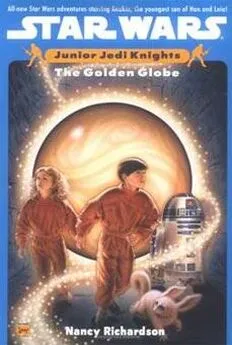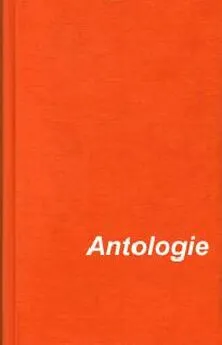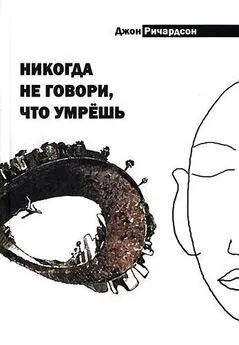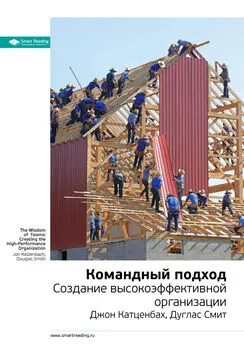Джон Ричардсон - Мысленные образы. Когнитивный подход
- Название:Мысленные образы. Когнитивный подход
- Автор:
- Жанр:
- Издательство:Литагент «Когито-Центр»881f530e-013a-102c-99a2-0288a49f2f10
- Год:2006
- Город:Москва
- ISBN:5-89353-187-6, 0-86377-843-7
- Рейтинг:
- Избранное:Добавить в избранное
-
Отзывы:
-
Ваша оценка:
Джон Ричардсон - Мысленные образы. Когнитивный подход краткое содержание
Учебное пособие написано с позиций когнитивного подхода и посвящено проблеме ментальных, или мысленных образов. Кратко, но систематично и на современном уровне освещаются разные аспекты психологии образов: переживание образов, образная репрезентация, образность той или иной стимуляции, образ как способ организации деятельности. Значительное внимание уделено методам исследования и диагностики образной сферы человека, а также мозговым механизмам, связанным со способностью к генерации образов.
Данное пособие в значительной степени восполняет пробел в доступной отечественному читателю психологической литературе и будет полезна не только психологам – студентам, аспирантам и научным работникам, – но также и всем тем, кого интересуют механизмы и закономерности познавательной деятельности человека.
Мысленные образы. Когнитивный подход - читать онлайн бесплатно ознакомительный отрывок
Интервал:
Закладка:
De Beni, R., Мое, A., & Cornoldi, С (1997).
Learning from texts or lectures: Loci mnemonics can interfere with reading but not with listening. European Journal of Cognitive Psychology, 9, 401–415.
Decety, J. (1996). Do imagined and executed actions share the same neural substrate? Cognitive Brain Research, 3, 87–93.
Decety, J., & Ingvar, D.H. (1990). Brain structures participating in mental simulation of motor behavior: A neuropsychological interpretation. Acta Psychologica 73, 13–34.
Denis, M. (1982). Imaging while reading text: A study of individual differences. Memory and Cognition, 10, 540–545.
Denis, M., & Cocude, M. (1989). Scanning visual images generated from verbal descriptions. European Journal of Cognitive Psychology, 1, 293–307.
Denis, M, & Cocude, M. (1992). Structural properties of visual images constructed from poorly or well-structured verbal descriptions. Memory and Cognition, 20, 497–506.
Denis, M., & Cocude, M. (1997). On the metric properties of visual images generated from verbal descriptions: Evidence for the robustness of the mental scanning effect. European Journal of Cognitive Psychology, 9, 353–379.
De Renzi, E., & Nichelli, P. (1975). Verbal and non-verbal short-term memory impairment folowing hemispheric damage. Cortex, 11, 341–354.
D’Esposito, M, Detre, J.A., Aguirre, G.K., Stall-cup, M., Alsop, D.C., Tippet, L.J., & Farah, M.J. (1997). A functional MRI study of mental image generation. Neuropsychologia, 35, 725–730.
Deutsch, G., Bourbon, Т., Papanicolaou, A.C., & Eisenberg, H.M. (1988). Visuo-spatial tasks compared via activation of regional cerebral blood flow. Neuropsychologia, 26, 445–452.
Di Vesta, F.J., & Sunshine, P.M. (1974). The retrieval of abstract and concrete materials as functions of imagery, mediation, and mnemonic aids. Memory and Cognition, 2, 340–344.
Drachman, D.A., & Sahakian, B.J. (1979). Effects of cholinergic agents on human learning and memory. In A. Barbeau, J.H. Growdon, & R.J. Wurtman (Eds), Nutrition and the brain: Vol. 5. Choline and lecithin in brain disorders (pp. 351–366). New York: Raven
Edwards, J.E., & Wilkins, W. (1981). Verbalizer-Visualizer Questionnaire: Relationship with imagery and verbal-visual ability. Journal of Mental Imagery, 5(2), 137–142.
Ehrlichman, H., & Barrett, J. (1983). Right hemispheric specialization for mental imagery: A review of the evidence. Brain and Cognition, 2, 55–76.
Ehrlichman, H., & Weinberger, A. (1978). Lateral eye movements and hemispheric asymmetry: A critical review. Psychological Bulletin, 85, 1080–1101.
Einstein, CO., & McDaniel, M.A. (1987). Distinctiveness and the mnemonic effects of bizarre imagery. In M.A. McDaniel & M. Pressley (Eds), Imagery and related mnemonic processes: Theories, individual differences, and applications (pp. 78-102). New York: Springer-Verlag.
Ericsson, K.A., & Simon, H.A. (1993). Protocol analysis: Verbal reports as data (rev. ed.). Cambridge, MA: MIT Press.
Ernest, C.H. (1983). Imagery and verbal ability and recognition memory for pictures and words in males and females. Educational Psychology, 3, 227–244.
Fancher, R.W. (1994). Historical background of psychology. In A.M. Colman (Ed.), Companion encyclopedia of psychology (Vol. 1, pp. 19–37). London: Routledge.
Farah, M.J. (1984). The neurological basis of mental imagery: A componential analysis. Cognition, 18, 245–272.
Farah, M.J. (1988). Is visual imagery really visual? Overlooked evidence from neuropsychology. Psychological Review, 95, 307–317.
Farah, M.J. (1989). The neuropsychology of mental imagery. In F. Boiler & J. Grafman (Eds), Handbook of neuropsychology (Vol. 2, pp. 395–413). Amsterdam: Elsevier.
Farah, M.J., Gazzaniga, M.S., Holtzman, J.D., & Kosslyn, S.M. (1985). A left hemisphere basis for visual mental imagery? Neuropsychologia, 23, 115–118.
Farah, M.J., Hammond, K.M., Levine, D.N., & Calvanio, R. (1988). Visual and spatial mental imagery: Dissociable systems of representation. Cognitive Psychology, 20, 439–462.
Farah, M.J., Levine, D.N., & Calvanio, R. (1988). A case study of mental imagery deficit. Brain and Cognition, 8, 147–164.
Finke, R.A. (1989). Principles of mental imagery. Cambridge, MA: MIT Press.
Friedland, R.P., & Weinstein, E.A. (1977).
Hemi-inattention and hemisphere specialization: Introduction and historical review. In E.A. Weinstein & R.P. Friedland (Eds), Hemi-inattention and hemisphere specialization (Advances in Neurology, VT 18, pp. 131). New York: Raven Press.
Friedman, A. (1978). Memorial comparisons without the “mind’s eye”. Journal of Verbal Learning and Verbal Behavior, 17, 427–444.
Friendly, M., Franklin, P.E., Hoffman, D., & Rubin, D.C. (1982). The Toronto Word Pool: Norms for imagery, concreteness, orthographic variables, and grammatical usage for 1,080 words. Behavior Research Methods and Instrumentation, 14, 375–399.
Frith, CD., Richardson, J.T.E., Samuel, M., Crow, T.J., & McKenna, P.J. (1984). The effects of intravenous diazepam and hyoscine upon human memory. Quarterly Journal of Experimental Psychology, 36A, 133–144.
Gade, A. (1994). Imagery as a mnemonic aid in amnesia patients: Effects of amnesia subtype and severity. In M.J. Riddoch & G.W. Humphreys (Eds), Cognitive neuropsychology and cognitive rehabilitation (pp. 571–589). Hove, UK: Laurence Erlbaum Associates Ltd.
Galton, F. (1880). Statistics of mental imagery. Mind, 3, 301–318.
Galton, F. (1883). Inquiries into human faculty and its development. London: Macmillan.
Gasparrini, В., & Satz, P. (1979). A treatment for memory problems in left hemisphere CVA patients. Journal of Clinical Neuropsychology, 1, 137–150.
Gazzaniga, M.S., & LeDoux, J.E. (1978). The integrated mind. New York: Plenum Press.
Gazzaniga, M.S., Risse, G.L., Springer, S.P., Clark, E., & Wilson, D.H. (1975). Psychologic and neurologic consequences of partial and complete cerebral commissurotomy. Neurology, 25, 10–15.
Gloor, P., Olivier, A., Quesney, L.F., Andermann, F., & Horowitz, S. (1982). The role of the limbic system in experiential phenomena of temporal lobe epilepsy. Annals of Neurology, 12, 129–144.
Goldenberg, G. (1989). The ability of patients with brain damage to generate mental visual images. Brain, 112, 305–325.
Goldenberg, G., Podreka, I., & Steiner, M. (1990). The cerebral localization of visual imagery: Evidence from emission computerized tomography of cerebral blood flow. In P.J. Hampson, D.F. Marks, & J.T.E. Richardson (Eds), Imagery: Current developments (pp. 307–332). London: Routledge.
Goldenberg, G., Podreka, L, Steiner, M., Suess, E., Deecke, L., & Willmes, K. (1988). Pattern of regional cerebral blood flow related to visual and motor imagery: Results of emission computerized tomography. In M. Denis, J. Engelkamp, & J.T.E. Richardson (Eds), Cognitive and neuropsychological approaches to mental imagery (pp. 363–373). Dordrecht: Martinus Nijhoff.
Goldenberg, G., Podreka, I., Steiner, M, & Willmes, K. (1987). Patterns of regional cerebral blood flow related to meaningfulness and imaginability of words: An emission computer tomography study. Neuropsychologia, 25, 473–485.
Gordon, R. (1949). An investigation into some of the factors that favour the formation of stereotyped images. British Journal of Psychology, 39, 156–167.
Green, K.E., & Schroeder, D.H. (1990). Psychometric quality of the Verbalizer-Visual-izer Questionnaire as a measure of cognitive style. Psychological Reports, 66, 939–945.
Grossi, D., Modafferi, A., Pelosi, L., & Trojano, L. (1989). On the different roles of the cerebral hemisphere in mental imagery: The “o’clock test” in two clinical cases. Brain and Cognition, 10, 18–27.
Guariglia, C, Padovani, A., Pantano, P., & Pizzamiglio, L. (1993). Unilateral neglect restricted to visual imagery. Nature, 364, 235–237.
Guilford, J.P., Fruchter, В., & Zimmerman, W.S. (1952). Factor analysis of the Army Air Forces Sheppard Field battery of experimental aptitude tests. Psychometrika, 17, 45–68.
Gur, R.C., & Hilgard, E.R. (1975). Visual imagery and the discrimination of differences between altered pictures simultaneously and successively presented. British Journal of Psychology, 66, 341–345.
Halgren, E., Walter, R.D., Cherlow, D.G., & Crandall, P.H. (1978). Mental phenomena evoked by electrical stimulation of the human hippocampal formation and amygdala. Brain, 101, 83-117.
Halligan, P.W., & Marshall, J.C. (1992). Left visuo-spatial neglect: A meaningless entity? Cortex, 28, 525–535.
Harris, L.J. (1978). Sex differences in spatial ability: Possible environmental, genetic, and neurological factors. In M. Kinsbourne (Ed.), Asymmetrical function of the brain (pp. 405–522). Cambridge, UK: Cambridge University Press.
Harshman, R.A., & Paivio, A. (1987). “Paradoxical” sex differences in self-reported imagery. Canadian Journal of Psychology, 41, 287–302.
Haynes, W.O., & Moore, W.H. (1981). Sentence memory and recall: An electroenceph-alographic evaluation of hemispheric processing in males and females. Cortex, 17, 49–62.
Hiscock, M. (1976). Effects of adjective imagery on recall from prose. Journal of General Psychology, 94, 295–299.
Hiscock, M. (1978). Imagery assessment through self-report: What do imagery questionnaires measure? Journal of Consulting and Clinical Psychology, 46, 223–230.
Hoc, J.M., & Leplat, J. (1983). Evaluation of different modalities of verbalization in a sorting task. International Journal of Man-Machine Studies, 18, 283–306.
Holt, R.R. (1964). Imagery: The return of the ostracized. American Psychologist, 19, 254–264. Hyman, I.E., Jr. (1993). Imagery, reconstructive memory, and discovery. In B. Roskos-Ewoldson, M.J. Intons-Peterson, & R.E. Anderson (Eds),
Imagery, creativity, and discovery: A cognitive perspective (pp. 99-121). Amsterdam: Elsevier.
Indow, Т., & Togano, K. (1970). On retrieving sequence from longterm memory. Psychological Review, 77, 317–331.
Intons-Peterson, M.J. (1983). Imagery paradigms: How vulnerable are they to experimenters’ expectations? Journal of Experimental Psychology: Human Perception and Performance, 9, 394–412.
Isaac, A.R., & Marks, D.F. (1994). Individual differences in mental imagery experience: Developmental changes and specialization. British Journal of Psychology, 85, 479–500.
Isaac, A., Marks, D.F., & Russell, D.G. (1986). An instrument for assessing imagery of movement: The Vividness of Movement Imagery Questionnaire. Journal of Mental Imagery, 20(4), 23–30.
Janssen, W.H. (1976a). Selective interference during the retrieval of visual images. Quarterly Journal of Experimental Psychology, 28, 535–539.
Janssen, W.H. (1976b). Selective interference in paired-associate and free recall learning: Messing up the image. Acta Psychologica, 40, 35–48.
Jones, G.V. (1988). Images, predicates, and retrieval cues. In M. Denis, J. Engelkamp, & J.T.E. Richardson (Eds), Cognitive andneu-ropsychological approaches to mental imagery (pp. 89–98). Dordrecht: Martinus Nijhoff.
Читать дальшеИнтервал:
Закладка:







